Mahayana
Mahayana, (Sanskrit: “Greater Vehicle”) was a movement that arose within Indian Buddhism around the beginning of the Common Era and, by the 9th century, became the dominant influence on the Buddhist cultures of countries in East Asia. The origins of Mahayana Buddhism remain obscure; the date and location of the tradition’s emergence are unknown, and the movement most likely took shape over time and in multiple places. The earliest sources for the tradition are the Mahayana sutras, scriptures that were first compiled some four centuries after the Buddha’s death. As in earlier canonical Buddhist literature, these scriptures, almost certainly written by monks, present the movement’s innovative ideas in the form of sermons said to have been delivered by the Buddha Shakyamuni, as Siddhartha Gautama was known.
Buddhas and bodhisattvas (beings on their way to Buddhahood) are central elements of Mahayana. Mahayana has a vastly expanded cosmology and theology compared to early Buddhism, with various Buddhas and powerful bodhisattvas residing in different worlds and buddha-fields. Buddhas unique to Mahayana include the Buddhas Amitabha ("Infinite Light"), Akṣobhya ("the Imperturbable"), Bhaiṣajyaguru ("Medicine guru") and Vairocana ("the Illuminator"). In Mahayana, a Buddha is seen as a being that has achieved the highest kind of awakening due to his superior compassion and wish to help all beings.
Below is the photo of a 3rd century CE statue that shows bodhisattva Maitreya, the Buddha, and bodhisattva Avalokiteśvara:
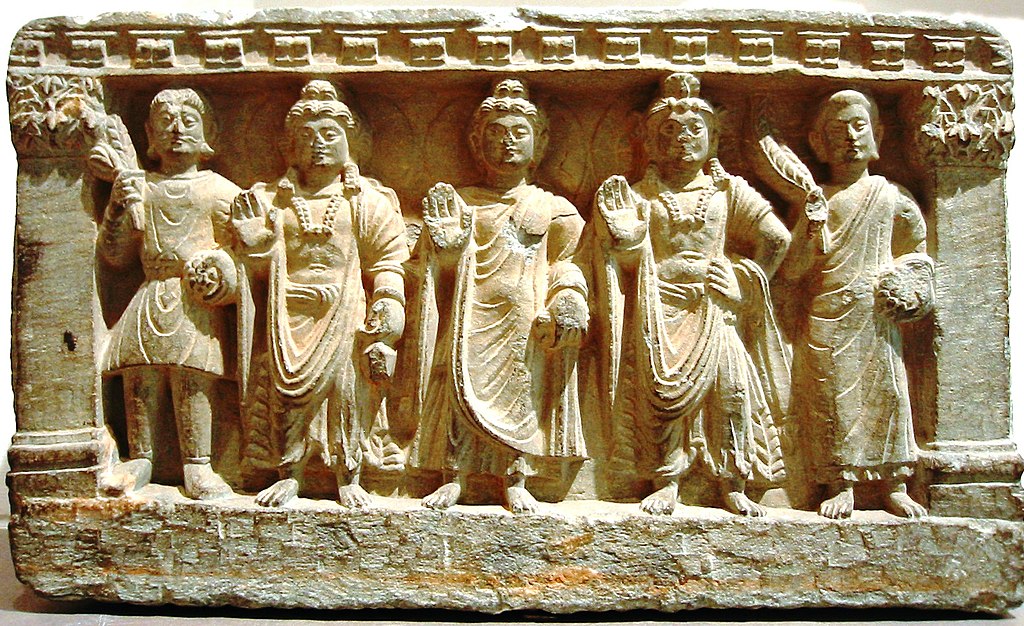
An important feature of Mahayana is the way that it understands the nature of a Buddha, which differs from earlier understandings. Mahayana texts not only often depict numerous Buddhas besides Sakyamuni, but see them as transcendental or supramundane beings with great powers and huge lifetimes.
A major development of the Mahayana tradition is the rise of the Madhyamaka school of Buddhism found by an Indian philosopher Nagarjuna around 200 CE. It was one of the two principal schools of Mahayana Buddhism in India, the other school being the Yogachara, which arose a little later. The name of the school is a reference to the claim made by Buddhists in general that it is a middle path (madhyamā pratipad) that avoids the two extremes of eternalism—the doctrine that all things exist because of an eternal essence—and annihilationism—the doctrine that things have essences while they exist but that these essences are annihilated just when the things themselves go out of existence. The conviction of the Madhyamaka school, which can be called the Centrist school in English, is that this middle path is best achieved by a denial that things have any inherent natures at all. All things are, in other words, empty of inherent natures. This doctrine of universal emptiness of inherent natures is the hallmark of the school.
Below is a Tibetan drawing of Nagarjuna:
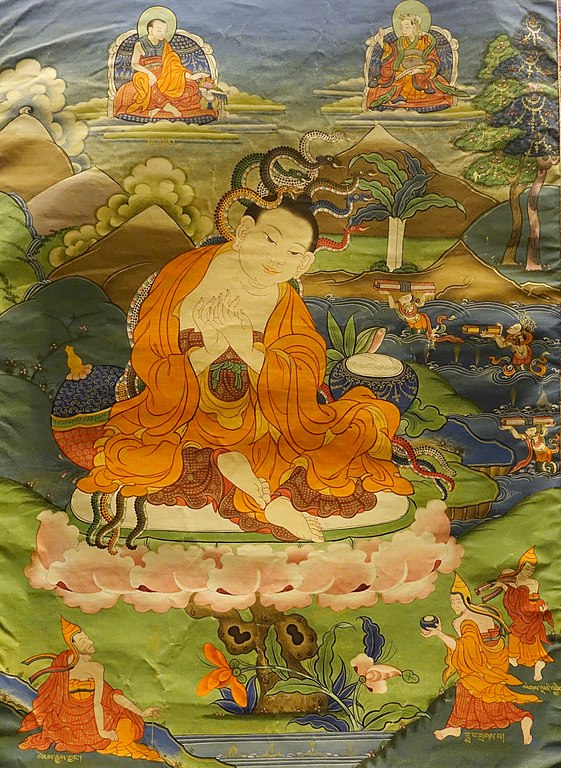
Probably the most popular Mahayana text is the Diamond Sutra, and it is particularly prominent within the Chan (or Zen) tradition, along with the Heart Sutra. The Sanskrit title for the sūtra is the Vajracchedikā Prajñāpāramitā Sūtra, which may be translated roughly as the "Vajra Cutter Perfection of Wisdom Sūtra" or "The Perfection of Wisdom Text that Cuts Like a Thunderbolt." The title relies on the power of the vajra (diamond or thunderbolt, but also an abstract term for a powerful weapon) to cut things as a metaphor for the type of wisdom that cuts and shatters illusions to get to ultimate reality.
This is an English translation of The Diamond Sutra.

Another important text of this school is the Vimalakīrti Nirdeśa Sūtra. This sutra teaches, among other subjects, the meaning of nondualism, the doctrine of the true body of the Buddha, the characteristically Mahayana claim that the appearances of the world are mere illusions, and the superiority of the Mahayana over other paths.
This is an English translation of The Vimalakīrti Nirdeśa Sūtra (The Teaching of Vimalakīrti)
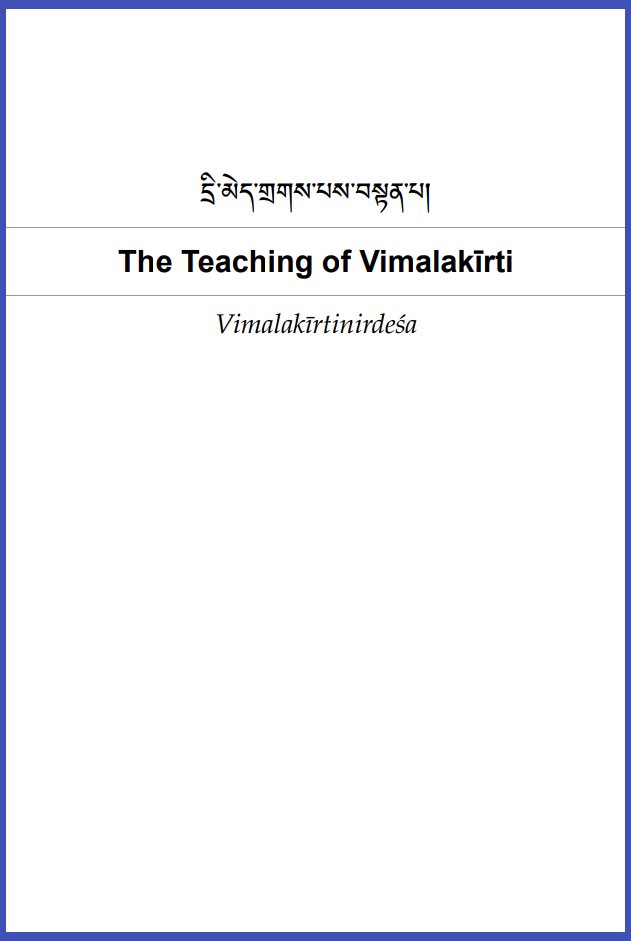
The second principal school is Yogachara, (Sanskrit: “Practice of Yoga [Union]”). It is also called Vijnanavada (“Doctrine of Consciousness”) or Vijnaptimatra (“Consciousness Only”). The name Vijnanavada is more descriptive of this school's philosophical position, which is that the reality a human being perceives does not exist, any more than do the images called up by a monk in meditation. Only the consciousness that one has of the momentary interconnected events that make up the cosmic flux can be said to exist. The school developed a new entity of alaya-vijnana, or “storehouse consciousness.” Sense perceptions are ordered as coherent by this store of consciousness, although one is unaware of its existence and actions. Each sentient being possesses this storage consciousness, which controls human perceptions of the world, though this world does not exist.
Based on legend, the important texts in Yogachara were divinely revealed from bodhisattva Maitreya to an Indian scholar Asanga who lived around the 4th century CE. The teachings of the Yogachara school were introduced into China by the 7th-century monk-traveler Xuanzang and formed the basis of the Faxiang school in China founded by Xuanzang’s pupil Kueiji. Because of its idealistic content it is also called Weishi (“Consciousness Only”).
Below is a drawing depicting bodhisattva Maitreya:
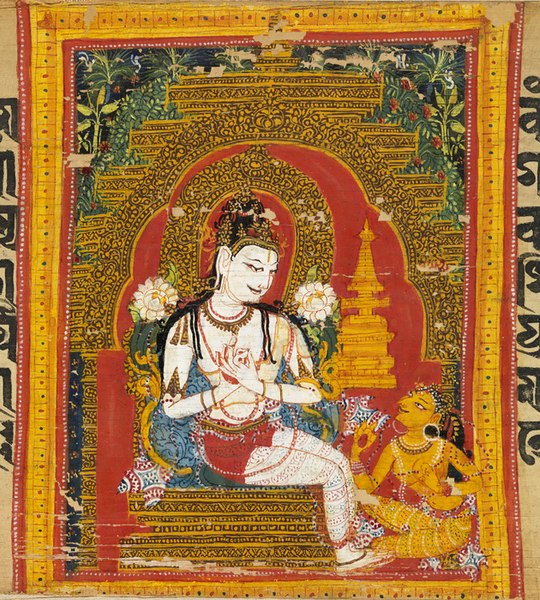
Probably the most important text of this school is the Saṃdhinirmocana sutra. It contains explanations of key Yogachara concepts such as alaya-vijñāna, the doctrine of appearance-only (vijñapti-mātra) and the "three own natures" (trisvabhāva). This sūtra was translated from Sanskrit into Chinese four times, the most complete and reliable of which is typically considered to be that of Xuanzang. It also was translated into Tibetan. The original Sanskrit text has not survived to the present day. Below is an English translation of the sutra:
Unraveling the Intent (Saṃdhinirmocana)
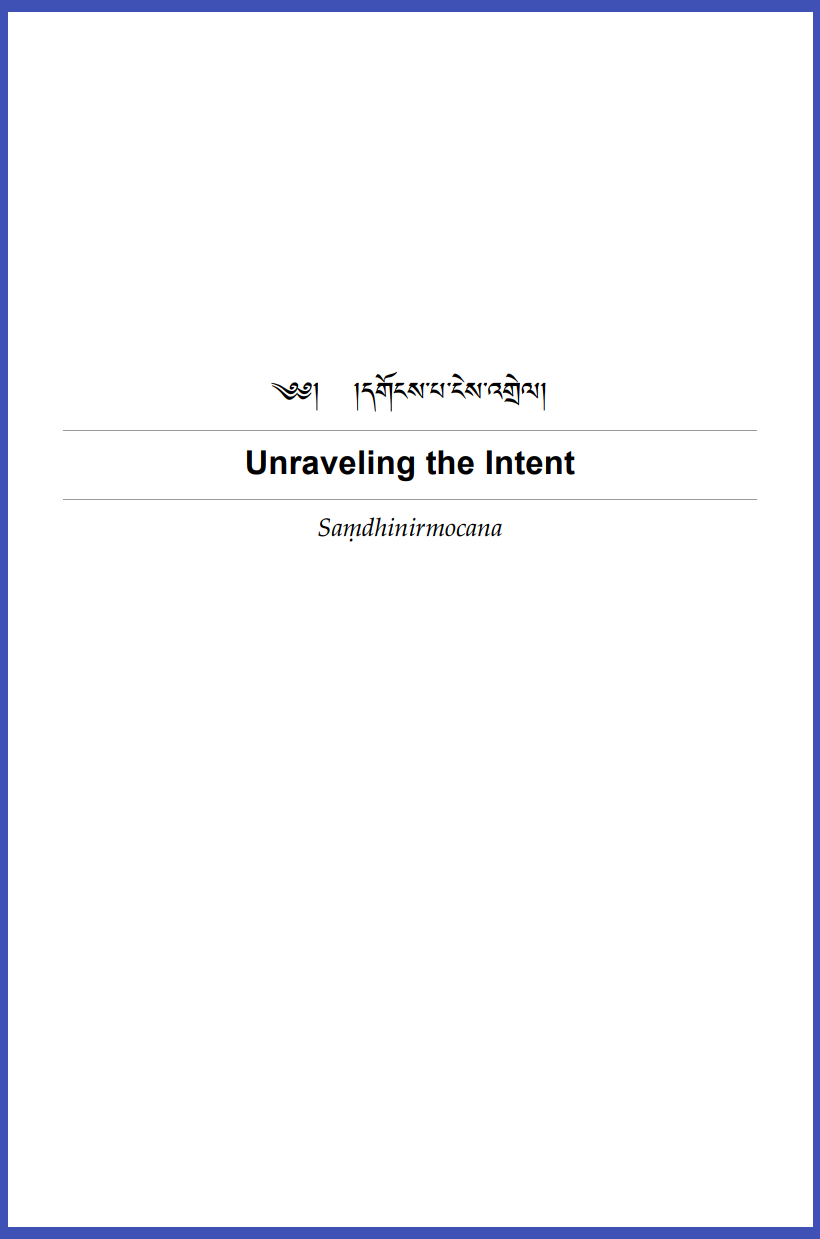
Around the 5th century CE, a Mahayana doctrine called tathagatagarbha (meaning embryoni Buddha) developed in India. This doctrine holds that ordinary people are in some way inherently the same as a Buddha. This doctrine is also known as "Buddha-nature." The Tathagatagarbha doctrine arose as an antidote to a perceived false and nihilistic understanding of "emptiness," wherein even Nirvana and the Buddha were wrongly viewed (according to this doctrine) as illusory and unreal. A number of sutras supporting this doctrine appeared. One of them is The Lankavatara Sutra. An English translation of it is provided below:
![]()